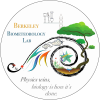Reports
Contents
| Title: | East End - NDVI (SRS, Apogee, Planet) | ||||||||||||||||||||||||||||
| Date: | 2017-06-07 - 2021-04-27 | ||||||||||||||||||||||||||||
| Data File: | EE_NDVI.csv | ||||||||||||||||||||||||||||
| Refers to: | EE,2046503390,2046503344,1053,1054 | ||||||||||||||||||||||||||||
|
Various sensors measuring NDVI have been installed across the Delta sites over the last several years. At some sites, the SRS sensors from Decagon/METER have been drifting low, so I wanted to compare them with other NDVI measurements.
I used Joe's datafetch tool to calculate daily average mid-day values of NDVI and GCC from the various sensors. Mid-day values included data from 11:00 to 13:00, 5 values a day. I despiked the data in Excel.
See reports for other Delta sites here: East Pond / Sherman Wetland Temp Tower (both sites had same set of SRS sensors) Twitchell Alfalfa / Sherman Barn (both sites had same set of SRS sensors)
Arable image of East End on June 29, 2018 (DOY 180). Lighter colors are higher NDVI and darker colors are lower NDVI (e.g., roads). I used a sampling area of 9 pixels, marked by the red box. Each pixel is 3x3m, so the total sampling area is 9x9m.
Figure 1. East End data. SRS data is suspicious because peak annual NDVI decreases year after year. Broadband NDVI peak is consistent across the whole time series and peak NDVI from the Planet imagery is consistent in 2018-2020. Broadband and Planet NDVI values match well. Apogee NDVI values from fall 2020 are similar to the SRS NDVI values when they those sensors were first installed in 2017.
Figure 2. SRS_650in peak is decreasing every year while SRS_810in peak is steady every year. At the least, the incoming sensor at EE is bad.
Figure 3. SRS_650out peak is stable every year, although it increases in 2021. SRS_810out peak decreases every year. For the outgoing sensor, it's hard to say from this figure if the changes are because of vegetation changes or because of sensor decays. However, Figure 5 below with NIR reflectance shows that the SRS peak decreases year-over-year compared to the PL peaks, so the 810out sensor is indeed bad.
Figure 4. Red reflectances from the SRS and PL data. Red reflectance peaks in the winter when plants are brown. The SRS red reflectance peak has increased in the last 2 winters because of the bad 650in sensor..
Figure 5. NIR reflectance from the SRS and PL data. NIR reflectance peaks in the summer when plants are green. SRS NIR reflectance peak has dcreased year after year, while the PL data show a similar peak in 2018 and 2019 with a higher peak in 2020 (all the dfPAR from fires in 2020?). The difference in 2018 and 2019 between SRS and PL peaks confirm that the SRS 810out sensor is bad.
Figure 6. Linear regression of EE data. What a mess! But we can still glean some info I think. The multiple clusters of the SRS-Planet regression and SRS-Broadband seem to indicate the SRS sensor is drifting through time. The SRS-Apogee regression has an ok fit, but since we have less than a year of Apogee data, it doesn't tell us much about how the SRS sensor has changed through time.
Figure 7. Linear regression of EE data from 2018-02-12 to 2018-10-03 only. Originally, I thought this was the period the SRS sensor seemed most stable in its first year. Not the best fit. But based on new comparisons with Broadband NDVI, it seems the SRS sensor was bad starting November 2017, so a regression using 2018 data is not really worthwhile anyways.
Figure 8. Linear regression of EE data 2017-06-07 to 2017-10-31 only. R2=0.85. This relationship looks better than the previous regression including 2018 data. I think the SRS data is bad starting Nov 2017.
Figure 9. Corrected SRS NDVI data for 2019-present using the SRS-Planet relationship from 2018 and the SRS-Broadband relationship from 2017. This correction is not very good because it does not include a time component. Next step is to figure out a time-based correction.
|
|||||||||||||||||||||||||||||
| |


